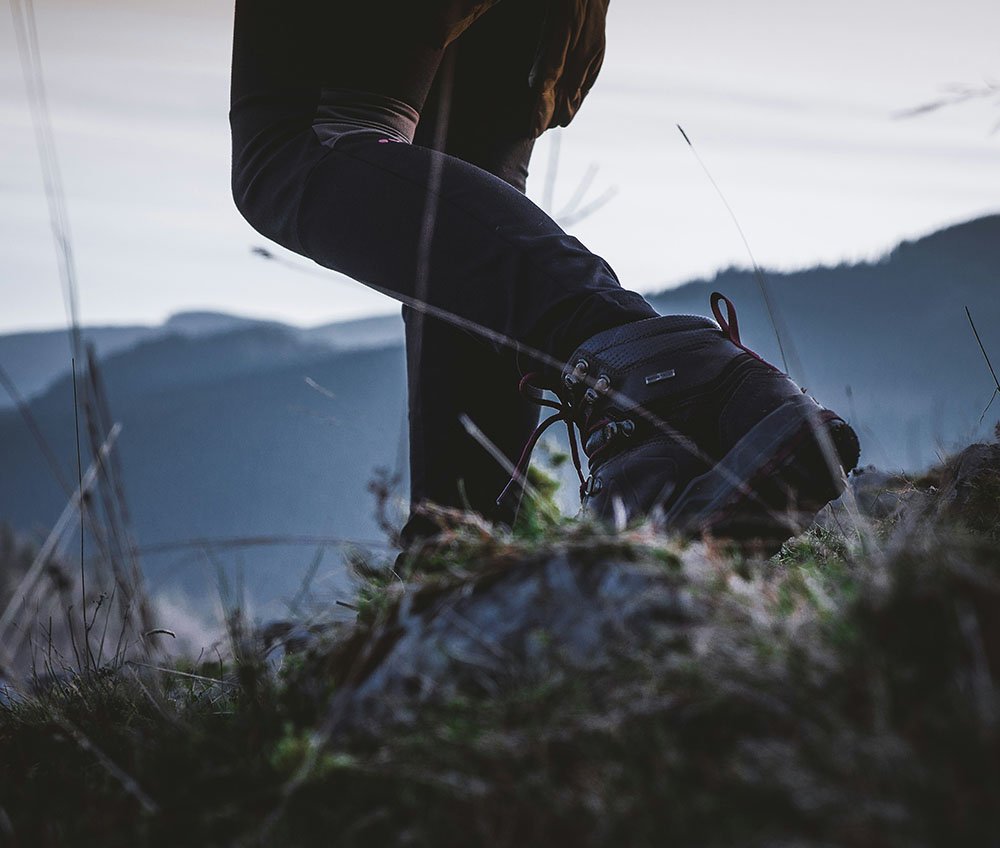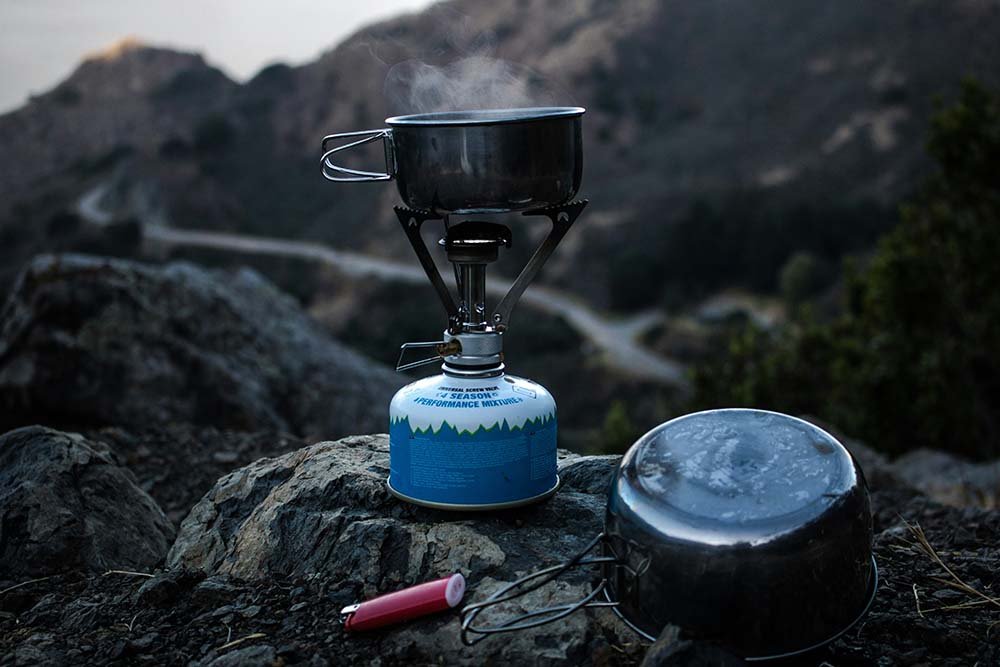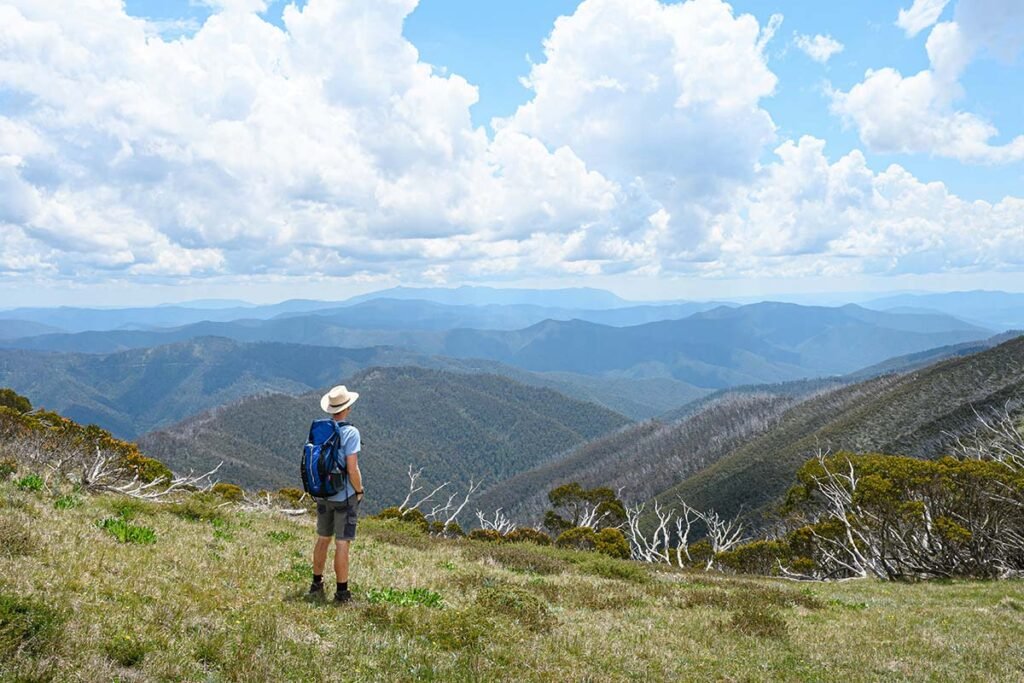There’s something about a long bushwalk that makes you feel like you’ve got life figured out. The air is crisp, the world is quiet and all the gear you need is what’s in your pack… Right?!
Of course, what’s in your pack is precisely what can make or break the experience. Australian weather can turn on a dime, but if you pack well, you’re prepared for whatever the great outdoors throws at you. Pack poorly and you’ll spend half the trip cursing your own decisions.
Here’s what to bring on a long bushwalk in Australia:
Skip to the complete packing list.
The right pack

Your pack should feel like an extension of your body, not an oversized schoolbag dragging you down.
A good hiking pack has padded straps, a hip belt and enough compartments to keep things organised but not so many that you forget where you put everything. If you find yourself blindly digging around for a muesli bar while your mate waits impatiently, you’ve gone too far.
Footwear matters more than you think
It’s easy to think any sturdy shoe will do. It won’t. Your feet are going to carry you the whole way so invest in proper hiking boots with good ankle support and break them in before the trip.

Blisters can turn a beautiful day into a painful slog. I’ve seen this learned the hard way on a two-day trek in the southwest. A friend was convinced his old joggers would be fine and ended up finishing the hike in borrowed thongs and a lot of bandaids.
Clothing: layers are key
Weather in the bush is unpredictable. The sun can be beating down one minute and the next you’re shivering in a cold wind. Wear layers so you can adjust as needed.
A moisture-wicking base layer, an insulating middle layer and a waterproof outer layer should cover most conditions. A hat and gloves are always a wise idea even if you think you won’t need them.
Quality sleeping bag
A good sleeping bag is essential for a multi-day hike. Go for an ultra-lightweight design that packs down small but still provides enough warmth for the conditions you’ll be facing.
Goose down filled bags (that carry the Responsible Down Standard (RDS) badge) tend to be warmer for their weight but synthetic options handle moisture better if there’s a chance of damp conditions. For us, buying a quality sleeping bag is everything. Check the temperature rating before you buy—there’s nothing worse than shivering through the night after underestimating how cold it gets once the sun goes down.
Camp cooking gear

A well-designed cooking set can make mealtimes easier without adding unnecessary bulk. Look for lightweight cookware that nests into itself, such as an all-in-one pot, pan and cup system. Many sets come with foldable handles and stackable components, making them easy to pack.
A small, efficient stove that screws onto a fuel canister is a great choice for boiling water quickly and cooking simple meals. If you want to cut down on weight even further, consider a titanium pot that doubles as a bowl. The key is to keep things minimal—enough to cook a proper meal without carrying a full kitchen on your back.
Lightweight tent
A lightweight, compact tent is essential for a multi-day hike. Look for one that balances durability, weather resistance and packability. A good hiking tent should be easy to set up and take down, with a sturdy frame that can handle wind and rain.
If you’re hiking solo, a one-person tent keeps weight down, while a two-person option provides extra space without adding too much bulk. Couple your tent with an inflatable sleeping mat to complete your sleep system.
Food and water: the balancing act
Take enough food to fuel you but not so much that your pack becomes unbearably heavy. Lightweight high-energy snacks like nuts, dried fruit and protein bars are gold.
For meals, dehydrated food works well though there’s no shame in throwing in a few luxuries. On one trip a mate surprised us with a vacuum-sealed steak for the first night. It felt like a five-star meal after a long day of walking.
Water is non-negotiable and you’ll need more than you think. A hydration bladder is great for sipping on the go, and a water filter or purification tablets are essential if you’re relying on streams. Even if it’s cool outside, you’ll sweat a tonne on the trail. Be wary of your water.
Navigation

A map and compass are great but only if you know how to use them. A GPS device or a phone with offline maps is a smart backup. That said, battery life is limited. And if you’re venturing deep into the bush, then reception is more than likely going to be non-existent. So don’t bet everything on technology.
First aid and safety
As far as what to bring on a long bushwalk, a small first aid kit is non-negotiable. Blister pads, bandages, painkillers and antiseptic wipes will save you a lot of trouble. Sunscreen and insect repellent also make life easier.
If you’re going remote consider an emergency beacon—one of those things you hope never to use but will be grateful for if needed. After all, something like 3,000 venomous snake bites occur each year in Oz. Amazingly, only about two to three people per year die of them. Perhaps, for bush walkers, that’s thanks to emergency beacons.
The extras that make a difference
A headlamp is more useful than a flashlight especially when you’re trying to set up camp or find your way to the loo at night. I love a headlamp which offers a red light, given it attracts far less insects and allows your eyes much better adjustment to the stunning night sky.
You’re going to stink. And if that bothers you, then perhaps a camp shower warrants a place in your pack. Get one of the cheap bags you can hang from a tree. It’s super light and, well, means you can set up your shower just about anywhere.

A lightweight tarp can double as shelter or a dry place to sit. And never underestimate the joy of a comfortable lightweight camp chair or a good book to unwind with. (For me, the latter is a non-negotiable.)
Complete packing list for a long bushwalk
- Hiking pack with padded straps and hip belt
- Proper hiking boots (broken in)
- Moisture-wicking base layer
- Insulating middle layer
- Waterproof outer layer
- Ultra lightweight sleeping bag
- Hat and gloves
- Lightweight camp cooking equipment
- Lightweight and compact tent
- Inflatable sleeping mat
- High-energy snacks (nuts dried fruit protein bars)
- Dehydrated meals
- Hydration bladder
- Water filter or purification tablets
- Map and compass
- GPS device or offline maps on phone
- First aid kit (including blister pads bandages painkillers antiseptic wipes)
- Sunscreen and insect repellent
- Emergency beacon (for remote areas)
- Headlamp
- Lightweight tarp
- Comfortable, lightweight camp chair
- A good book
The best gear is the gear that keeps you safe and comfortable without weighing you down. Every item should earn its place. The goal is to enjoy the walk and not feel like a pack mule. Get it right and you’ll be free to focus on the good stuff—the views, the fresh air and the simple joy of putting one foot in front of the other.
Want more great tips like these straight from explorers’ mouths? Check out plenty more Gear & Tips articles to help sharpen your adventure nous.



